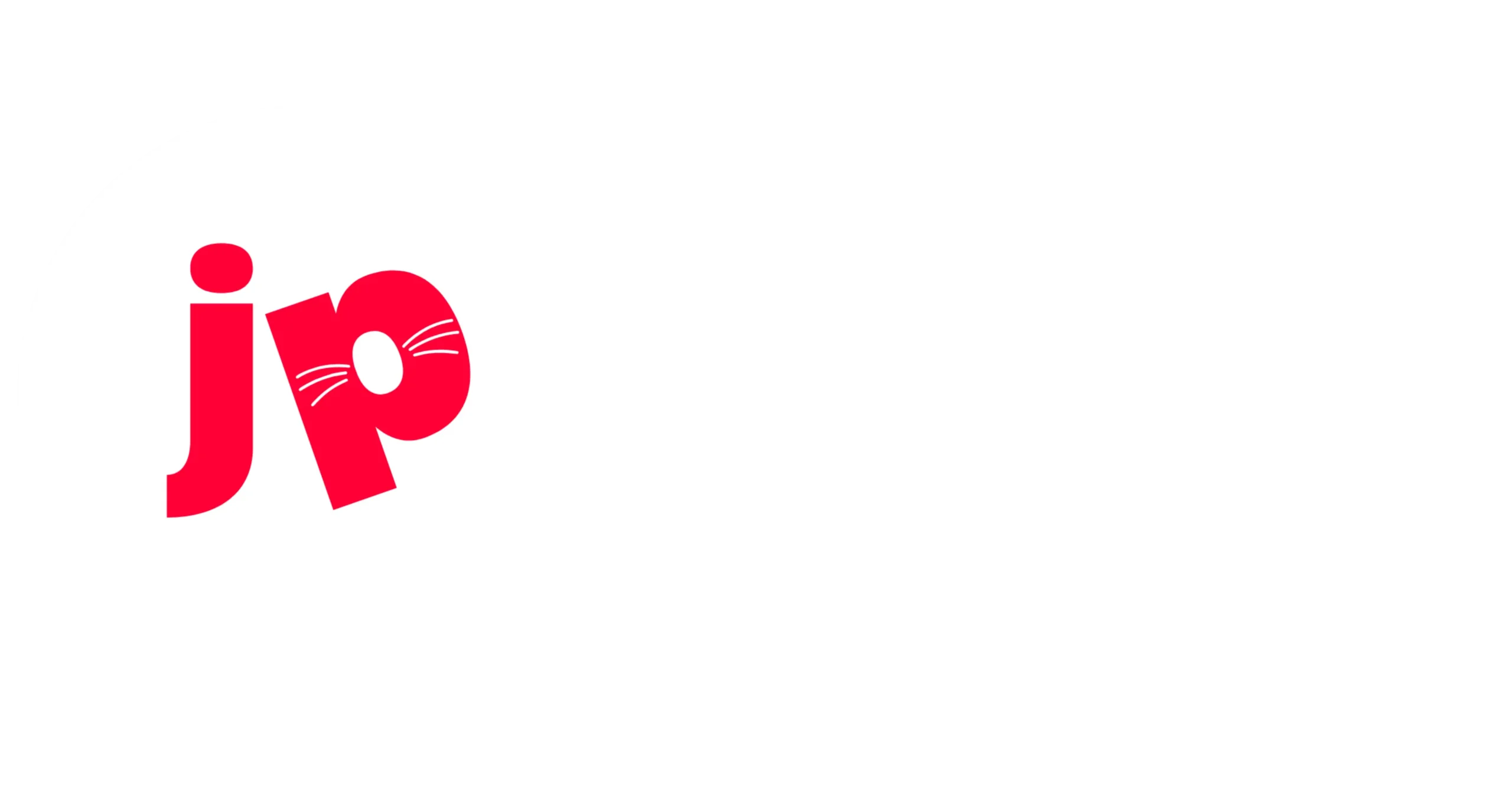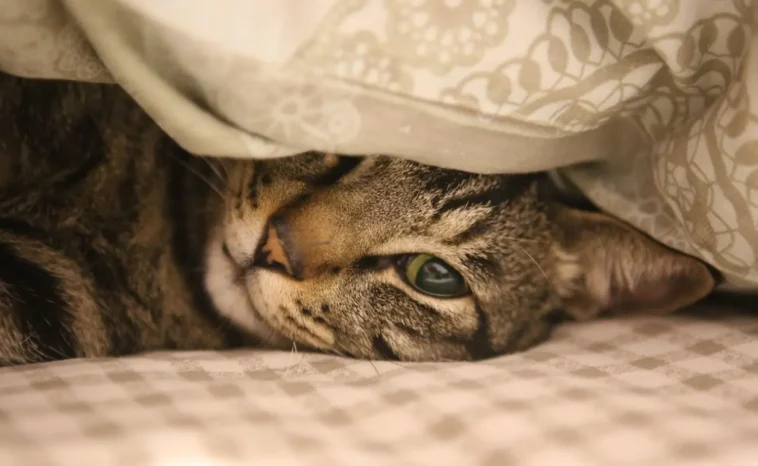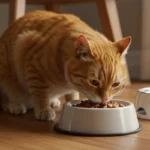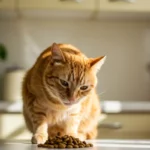Are you wondering, “How much dry food should a cat eat a day?” Whether you’re a new cat owner or looking to fine-tune your feline’s diet, feeding the right amount is essential for maintaining a healthy weight and overall well-being. Many factors affect a cat’s dietary needs, including age, activity level, and whether they consume wet food alongside dry kibble. In this article, we’ll explore daily dry food requirements, portion adjustments for weight loss, and how to balance dry and wet food effectively.
Overview
Feeding your cat the right amount of dry food is crucial to ensure they get the necessary nutrients without overeating. Dry food is convenient and has a longer shelf life than wet food, but it is calorie-dense, making portion control important. Understanding the appropriate serving size helps maintain a cat’s weight, energy levels, and overall health.
Factors That Determine How Much Dry Food a Cat Should Eat
Several factors influence a cat’s daily dry food intake, including:
- Age – Kittens, adult cats, and seniors have different caloric needs.
- Weight – Overweight cats require fewer calories than active, lean cats.
- Activity Level – Indoor cats tend to be less active and need fewer calories than outdoor cats.
- Health Conditions – Certain medical conditions, like diabetes or kidney disease, may require dietary adjustments.
- Type of Food – Different brands and formulations of dry food vary in caloric content.
How Much Dry Food Should a Cat Eat a Day? (General Guidelines)
A cat’s daily food intake depends on its weight and activity level. Below is a general feeding guideline based on average dry food calorie content (350-400 kcal per cup):
| Cat Weight | Daily Dry Food Amount |
|---|---|
| 5 lbs (2.3 kg) | 1/3 to 1/2 cup |
| 10 lbs (4.5 kg) | 1/2 to 3/4 cup |
| 15 lbs (6.8 kg) | 3/4 to 1 cup |
These amounts may vary depending on the brand and nutritional content of the dry food. Always check the feeding guidelines on the food packaging.
How Much Dry Food Should a Cat Eat a Day to Lose Weight?
If your cat is overweight, portion control is crucial. A weight-loss diet should focus on reducing calorie intake while maintaining nutritional balance. Here are key strategies:
- Reduce portions gradually – Decrease the daily dry food amount by 10-20% while monitoring weight changes.
- Choose a weight management formula – Look for dry food designed for weight control, with lower calories per serving.
- Increase activity levels – Encourage playtime with interactive toys to help burn calories.
- Monitor progress – Weigh your cat weekly and adjust portions accordingly.
Recommended Daily Dry Food Intake for Weight Loss
| Cat’s Current Weight | Target Weight | Daily Dry Food Amount |
| 12 lbs (5.4 kg) | 10 lbs (4.5 kg) | 1/3 to 1/2 cup |
| 15 lbs (6.8 kg) | 12 lbs (5.4 kg) | 1/2 to 3/4 cup |
| 18 lbs (8.2 kg) | 15 lbs (6.8 kg) | 3/4 to 1 cup |
Consult your veterinarian before making significant dietary changes, especially for obese cats or those with medical conditions.
How Much Dry Food Should a Cat Eat a Day with Wet Food?
Many cat owners choose to feed a mix of dry and wet food for added hydration and variety. Here’s how to balance both:
- Split calories between dry and wet food – If your cat needs 200 kcal/day and wet food provides 100 kcal, then reduce dry food accordingly.
- Reduce dry food intake – Feeding 50% wet food? Cut the dry food portion in half.
- Use a feeding schedule – Offer dry food in the morning and wet food in the evening, or mix them in one meal.
Example Daily Feeding Plan (Mixed Diet)
| Cat Weight | Daily Dry Food | Daily Wet Food (3 oz cans) |
| 10 lbs (4.5 kg) | 1/4 to 1/3 cup | 1 can |
| 15 lbs (6.8 kg) | 1/2 cup | 1.5 cans |
Feeding both types of food ensures your cat gets essential nutrients while staying hydrated.
Challenges and Solutions Related to Feeding Dry Food
Challenge: Overeating and Obesity
- Solution: Measure food portions and avoid free-feeding.
Challenge: Dehydration
- Solution: Always provide fresh water and consider incorporating wet food.
Challenge: Picky Eating Habits
- Solution: Mix dry food with a small amount of wet food to encourage eating.
Challenge: Digestive Issues
- Solution: Introduce new food gradually and monitor stool consistency.
Benefits of Dry Food for Cats
- Convenience – Easy to store and serve.
- Dental Health – Helps reduce plaque buildup.
- Cost-Effective – More affordable than wet food.
- Long Shelf Life – Doesn’t spoil quickly like wet food.
Expert Opinions on Cat Feeding
Dr. Lisa Montgomery, a veterinary nutritionist, advises: “Feeding the right amount of dry food depends on your cat’s weight, age, and overall health. Always check food labels and adjust portions as needed.”
According to the American Association of Feline Practitioners, cats thrive on a balanced diet that includes moisture-rich food to prevent urinary tract issues.
Frequently Asked Questions (FAQ)
1. Can I feed my cat only dry food?
Yes, but ensure they have access to fresh water and a balanced diet to avoid dehydration and urinary tract problems.
2. How do I know if I’m overfeeding my cat?
Signs of overfeeding include rapid weight gain, lack of activity, and visible fat deposits.
3. Should I measure my cat’s dry food daily?
Yes, measuring portions prevents overeating and ensures proper nutrition.
4. Can I free-feed dry food to my cat?
It’s not recommended for overweight or inactive cats. Measured meals are better for portion control.
5. How do I transition my cat to a mixed diet of dry and wet food?
Gradually introduce wet food while reducing dry food over 7-10 days to avoid digestive upset.
Conclusion & Call-to-Action
Feeding your cat the right amount of dry food is essential for their overall health and well-being. Factors like weight, activity level, and whether they eat wet food influence portion sizes. For those managing weight loss or feeding a mixed diet, adjusting portions and monitoring progress is key.
Want to learn more about feline nutrition? Check out our article on Best Healthy Cat Treats for Weight Management! Share your thoughts and experiences in the comments below!






2 Comments
Leave a Reply2 Pings & Trackbacks
Pingback:10 Best Indoor Cat Dry Food Options for a Healthier, Happier Cat
Pingback:How Much Food to Feed Cat